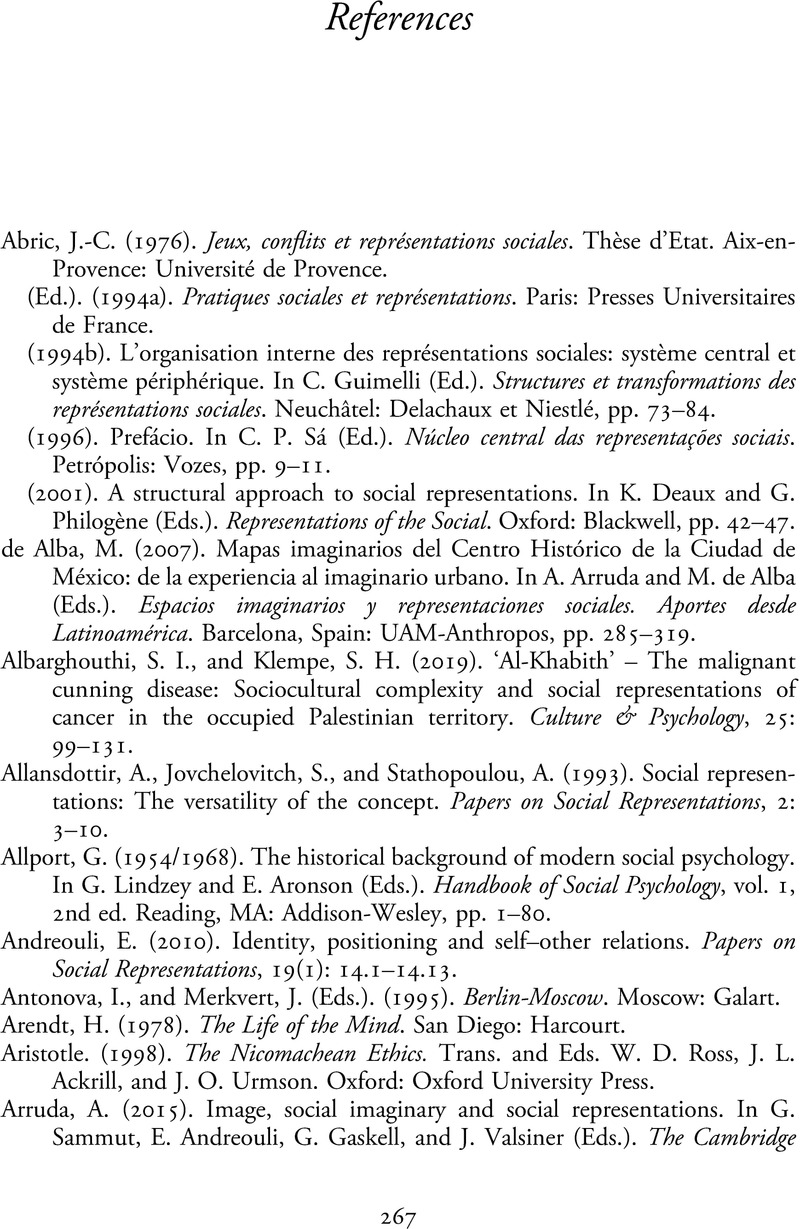Book contents
- The Making of a Dialogical Theory
- The Making of a Dialogical Theory
- Copyright page
- Contents
- Figures
- Acknowledgements
- Introduction
- Part I The Development and Diversification of the Theory of Social Representations and Communication
- Part II The Dialogical Perspective of the Theory of Social Representations and Communication
- Afterword
- References
- Index
- References
References
Published online by Cambridge University Press: 22 June 2023
- The Making of a Dialogical Theory
- The Making of a Dialogical Theory
- Copyright page
- Contents
- Figures
- Acknowledgements
- Introduction
- Part I The Development and Diversification of the Theory of Social Representations and Communication
- Part II The Dialogical Perspective of the Theory of Social Representations and Communication
- Afterword
- References
- Index
- References
Summary

- Type
- Chapter
- Information
- The Making of a Dialogical TheorySocial Representations and Communication, pp. 267 - 298Publisher: Cambridge University PressPrint publication year: 2023



